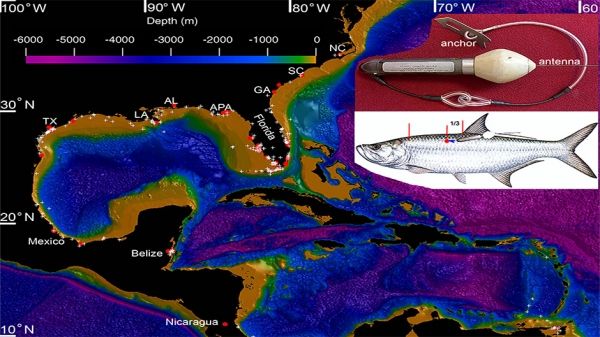The results of an 18-year study of Atlantic tarpon by scientists at the University of Miami (UM) Rosenstiel School of Marine and Atmospheric Science revealed that these large silvery fish take extensive seasonal migrations—1,000s of kilometers in distance—beyond U.S. borders. The new findings can help protect the fish, which is listed as vulnerable by the IUCN--International Union for Conservation of Nature, and the main draw of a more than $6 billion catch-and-release sport fishing industry in the United States.
Using electronic satellite tags, the UM research team tracked nearly 300 Atlantic tarpon (Megalops atlanticus) in coastal waters of the western central Atlantic Ocean, Gulf of Mexico and Caribbean Sea, including as far away as Mexico, Belize and Nicaragua. The results showed that the mature tarpon make extensive seasonal migrations along a warm, seasonally moving ocean-water feature known as the 26o C isotherm where temperatures remain constant. They also found the fish use both freshwater and estuarine habitat throughout their life and identified several previously unknown spawning locations in Florida and the Gulf of Mexico.
“Our findings show that there is international connectivity in the U.S. multibillion-dollar recreational tarpon fishing industry,” said
Read more at University of Miami
Image Credit: University of Miami


